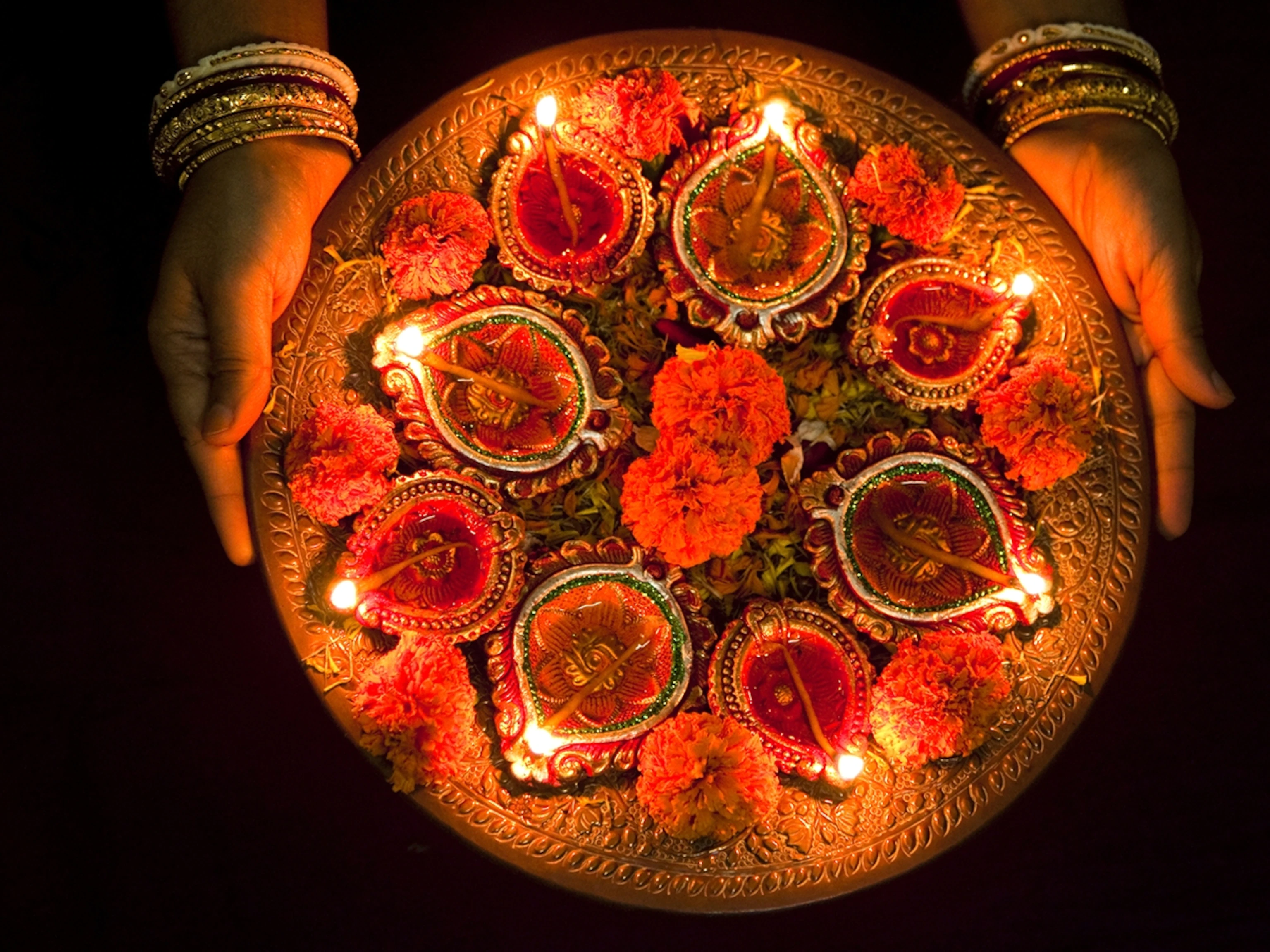
Six myths or lures explain the significance of Diwali.
According to numerous Hindu mythical traditions, Diwali, the Indian festival of lights, also called Deepwali, literally translated as “a garland of lights,” is celebrated to mark the beginning of the harvest season and is devoted to a number of deities. According to the most well-known tradition, the festival commemorates the 14-year exile of Lord Rama’s last day. They ignited hundreds of lanterns to direct the adored prince’s flying chariot into the city as the people of Ayodhya excitedly awaited his return. Rama travelled back to his native realm of Avadha with his wife Sita and the monkey soldiers, particularly Hanuman, on Amavasya, the darkest night of the year. The Hindu festival of Diwali, commonly known as the “Festival of Lights,” is observed to appease Goddess Lakshmi, the goddess of fortune and riches. According to the Western Calendar, the celebration often takes place in the months of October or November. Here are a few well-known stories related to this brilliant, dazzling festival of lights that explain why it has such a strong religious connotation:
The mythological tales’ accounts of the six Diwali enticements/legends
I. Lakshmi, the goddess of wealth
The celebration of Diwali or Deepwali is associated with this lovely and compassionate Goddess, MahaLakshmi, since she took on the form of Lakshmi, the Goddess of Wealth, on the new moon day of the Karthik month, during the great churning of the ocean known as Samudra-Manthan.
II. Lakshmi Was Saved by Lord Vishnu:
Another reason to adore and invoke Goddess Lakshmi on and around Diwali is the mythology that on this day, Lord Vishnu, in his fifth incarnation as Vaman, freed Lakshmi from the jail of legendary King Bali.
III. Narakaasur Was Slain by Lord Krishna:
According to mythology, Lord Krishna defeated the demon king Narakaasur on the eve of Diwali and freed 16,000 captive women. Two days, including Diwali, were devoted to celebrating this independence. This celebration thus commemorates the triumph of virtue over evil.
- The Pandavas’ Reunion:
According to a narrative from the epic Mahabharata, the 5 Pandavas returned from their 12 years of exile on Karthik Amavasya, according to the Hindu calendar. They had been sent into exile as punishment for losing to the Kauravas in the dice game. Thousands of clay lamps were lit and sweets were given out as the Pandava lovers celebrated the day. As a result, Deepwali has always been a holiday.
V. King Rama’s Succession:
Following their victory against Ravan and the conquest of his realm of Lanka, Lord Rama, Maa Sita, and Rama’s brother Lakshman returned to Ayodhya on the new moon day of the Karthik maas (month). To welcome them, the residents of Ayodhya adorned the whole city with clay lights and lit up every street and residence.
VI. Vikramaditya the King’s Coronation
Vikramaditya, one of the greatest Hindu Kings, is said to have been crowned on the day of Diwali, making the celebration a historical event rather than merely a fiction.
